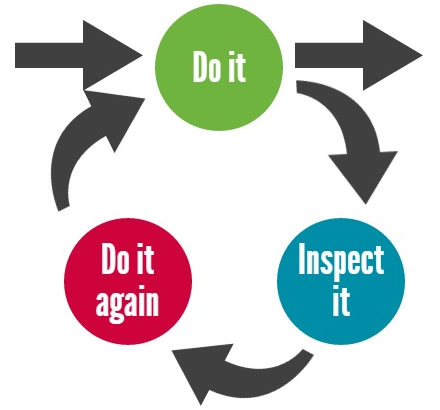- Jules Attard
- January 06th, 2015
Most quality professionals would agree with the statement that you can’t inspect quality into a product: If a product fails to consistently meet the customer requirements, inspection cannot correct that.
Inspection is both ineffective and inefficient. It incurs cost, doesn’t prevent every defect from reaching the customer, and any defects inspection is able to find represent a waste of the resources used to make them.

Quality by Design
Quality by Design originated in the manufacturing world, and aimed to create manufacturing processes which are designed to consistently deliver quality products to the customer. However, the basic concepts can be applied to any service or transactional process:
- Understand the customer needs and how you will measure them
- Identify the process elements which have the greatest impact on those needs
- Develop robust controls of those elements
- Mistake-proof those controls you can, and establish reliable measurement of those you can’t
If that sounds familiar (and if you’re still reading this, it probably will), that’s because it’s the same Design for Lean Six Sigma process that we learn as Green and Black Belts, just branded under a different banner. And the tools and techniques that give the greatest success here are those you will find in the DfLSS toolbox:
- Quality Function Deployment to identify the relationships between customer needs and process output measures, output measures and process elements, process elements and process settings.
- Designed Experiments to establish the transfer function between process inputs and outputs, and to find optimal settings.
- Failure Mode and Effect Analysis to identify risks and determine the most effective method to minimise it.
- Mistake-proofing and Statistical Process Control to ensure the process continues to do what you intend it to.
What’s stopping you?
So if it’s so clearly beneficial and straightforward, why don’t more process owners consider Quality by Design? Why are new processes developed with little more attention to quality than a Standard Operating Procedure and a training plan, with the expectation that mistakes will be sorted out later (even though that’s much harder to do)? Despite the approach taking only a little time to do well, in the desire to roll out a new department/organisation/business process quickly, anything which implies delay is unwelcome. Quality, therefore, becomes an afterthought.
However, the right answer beats a fast one. Always.

